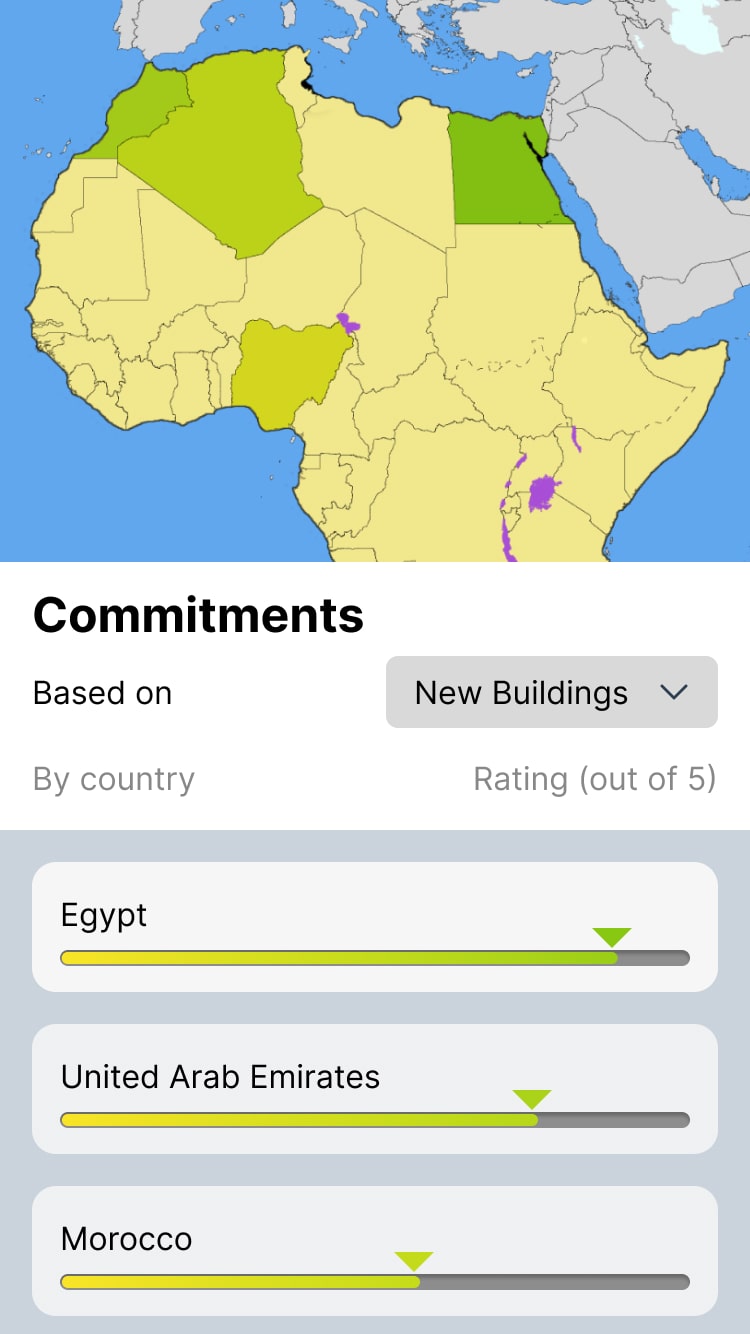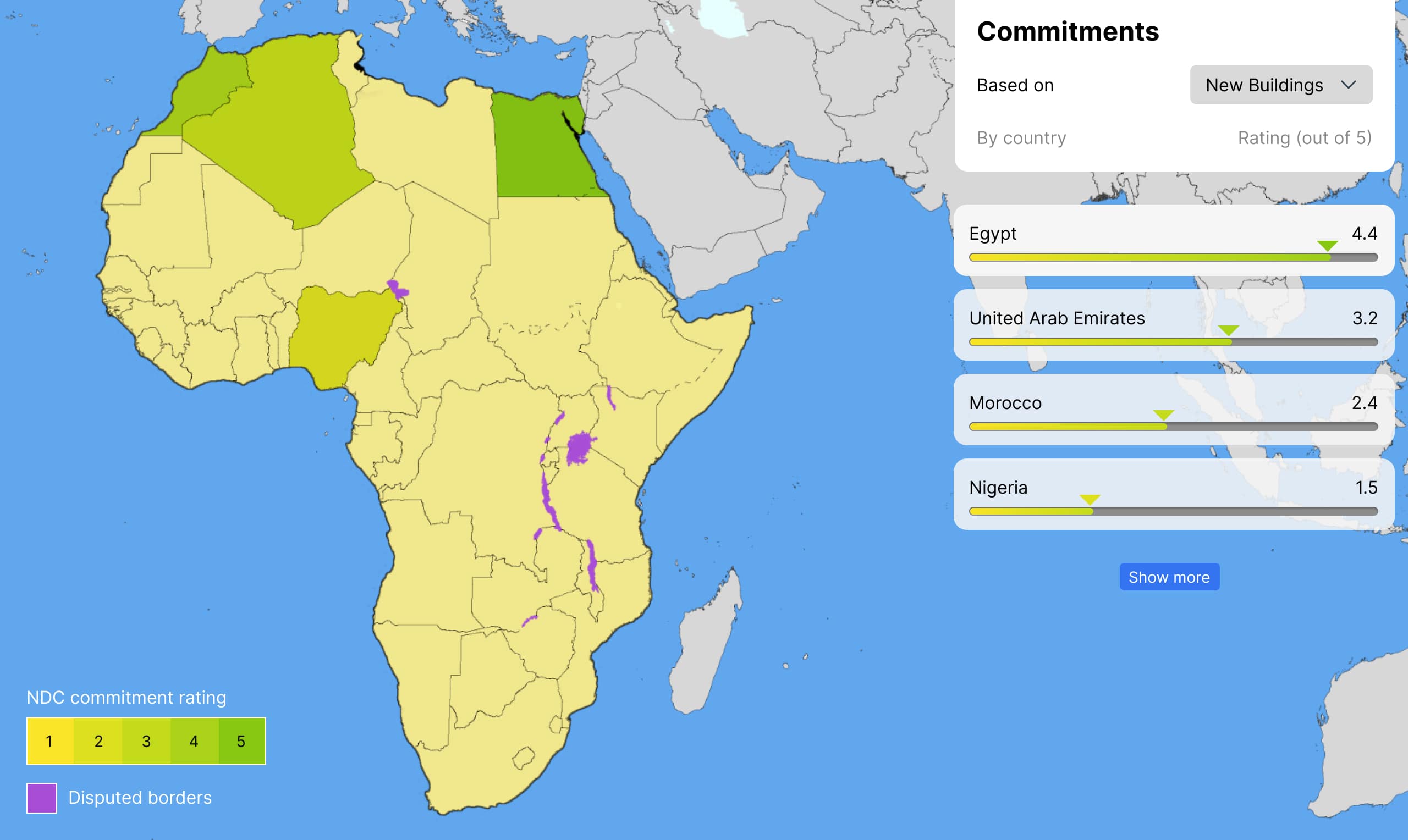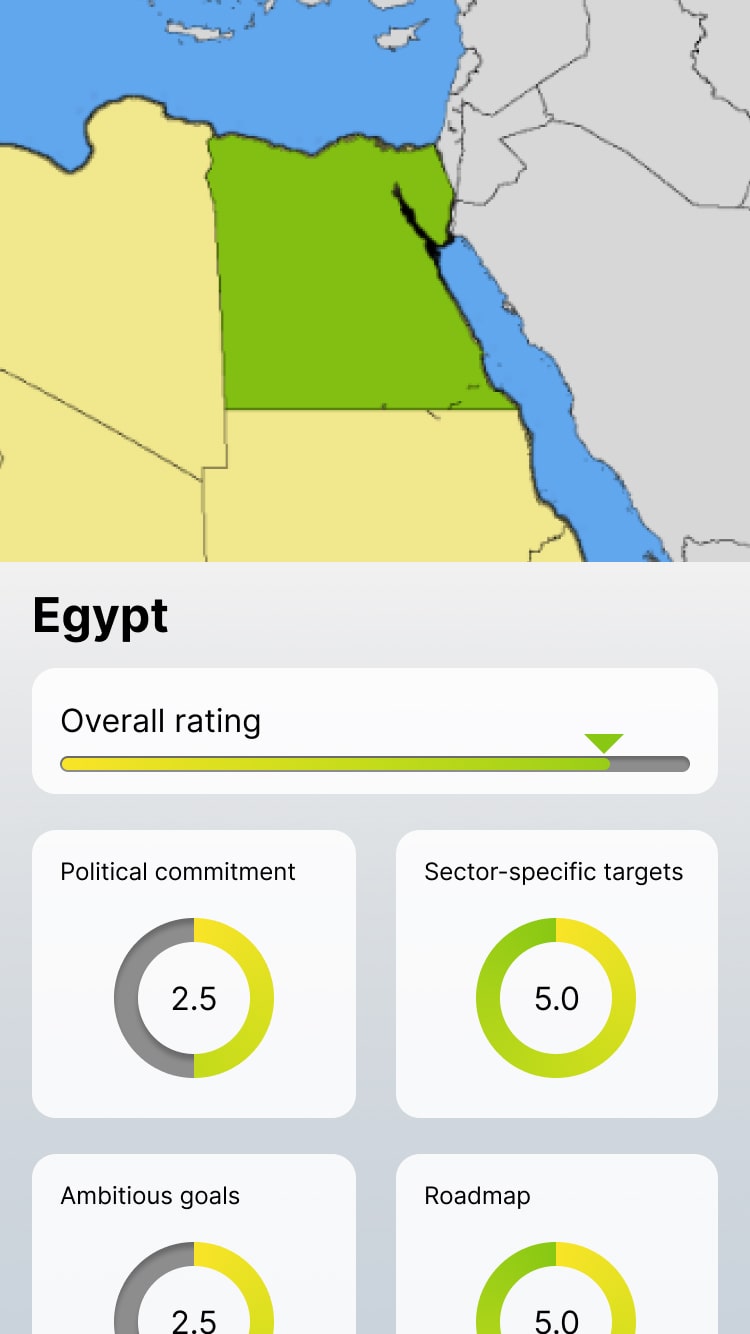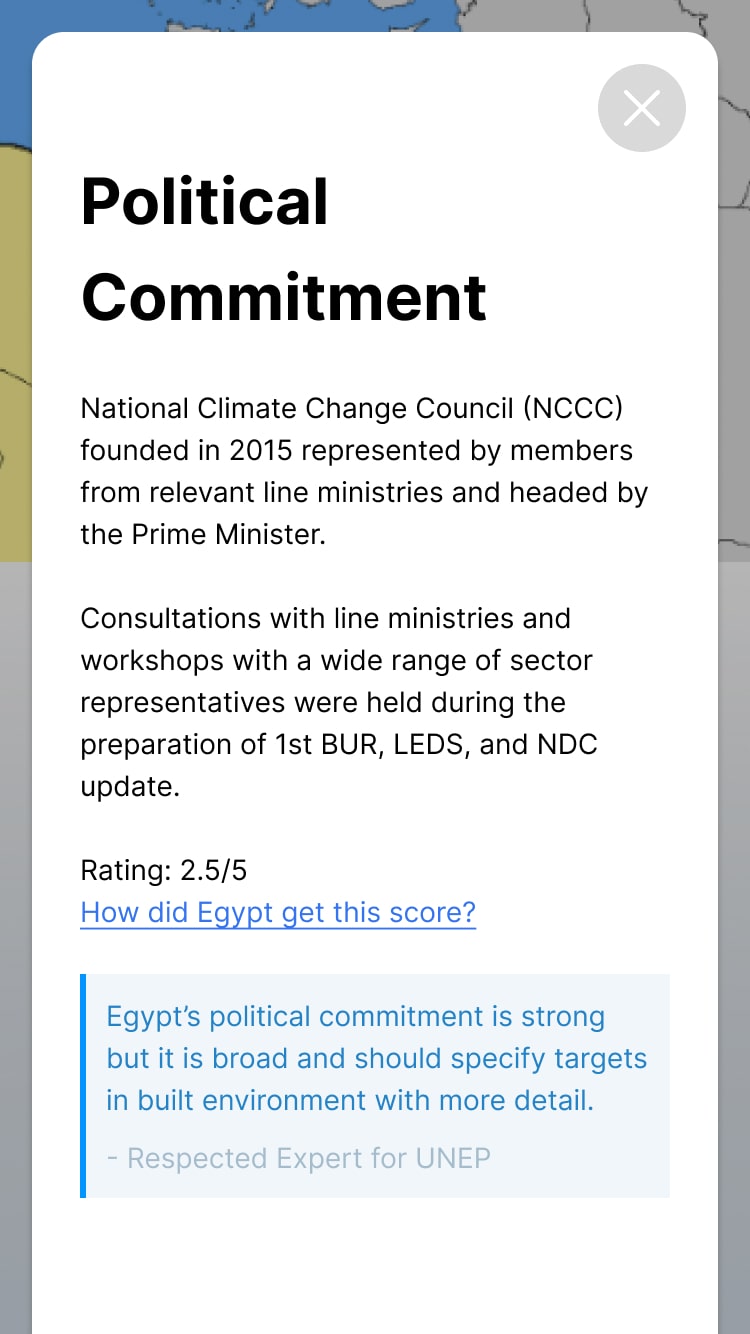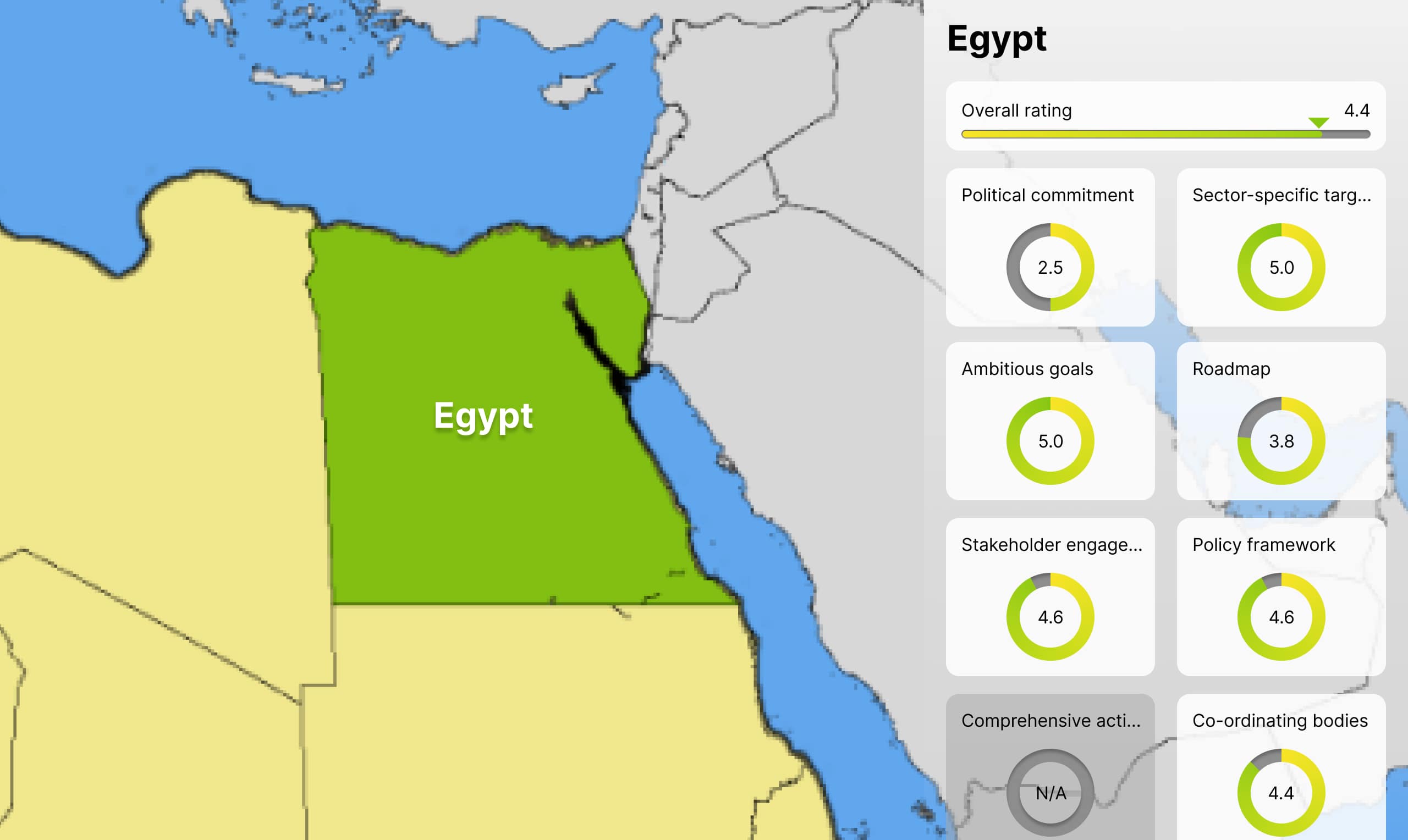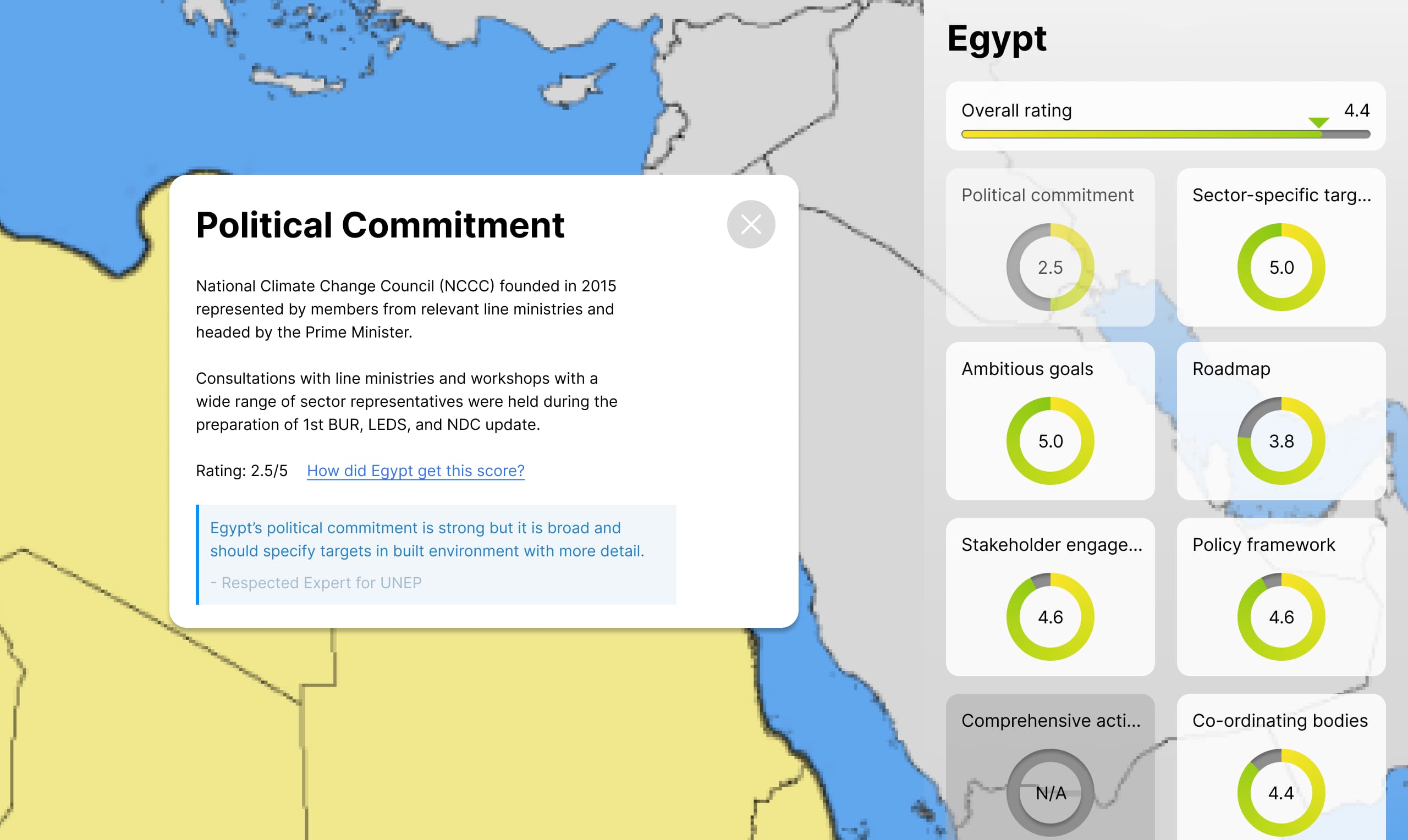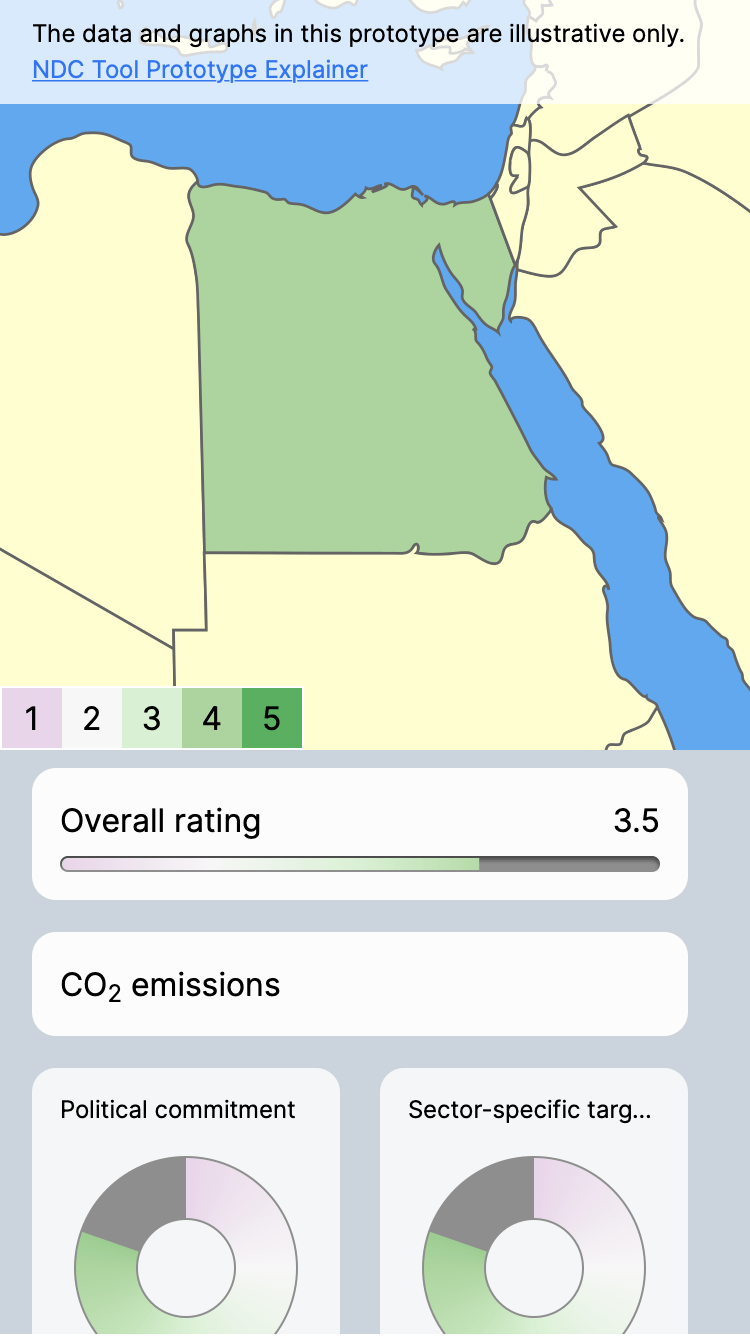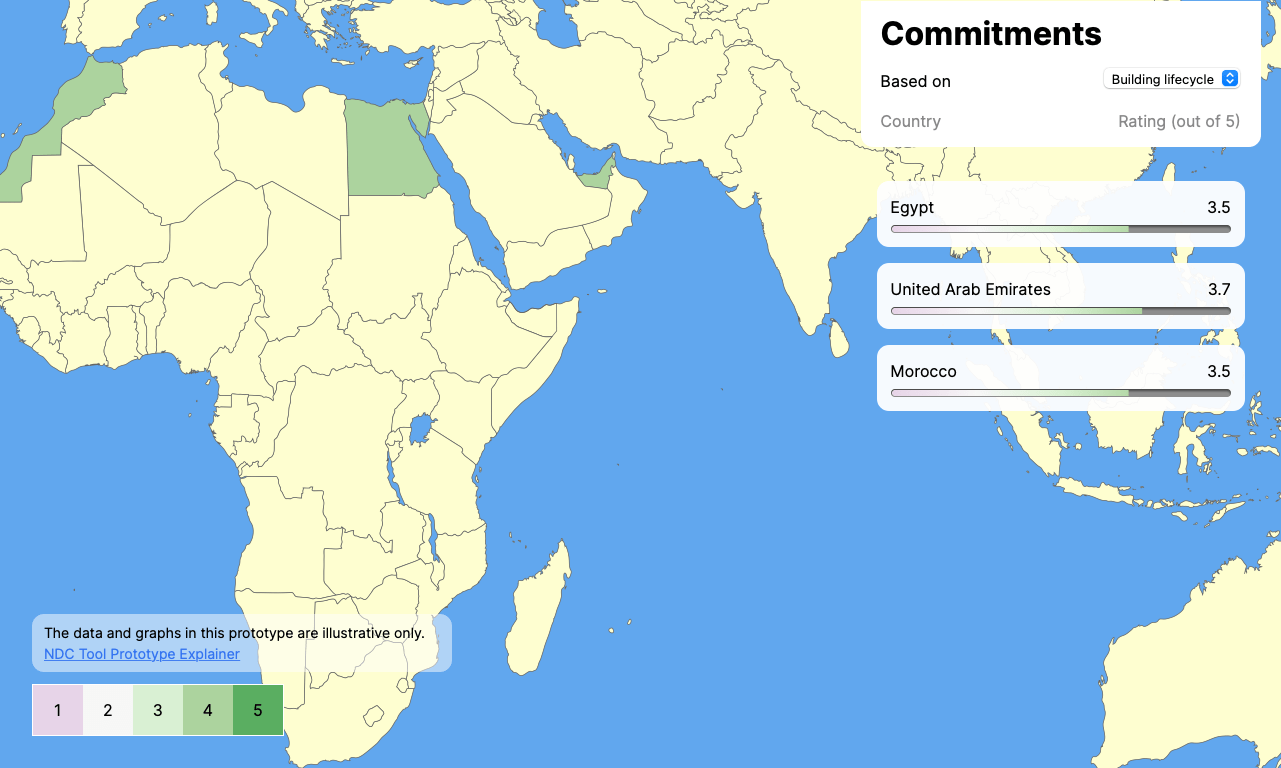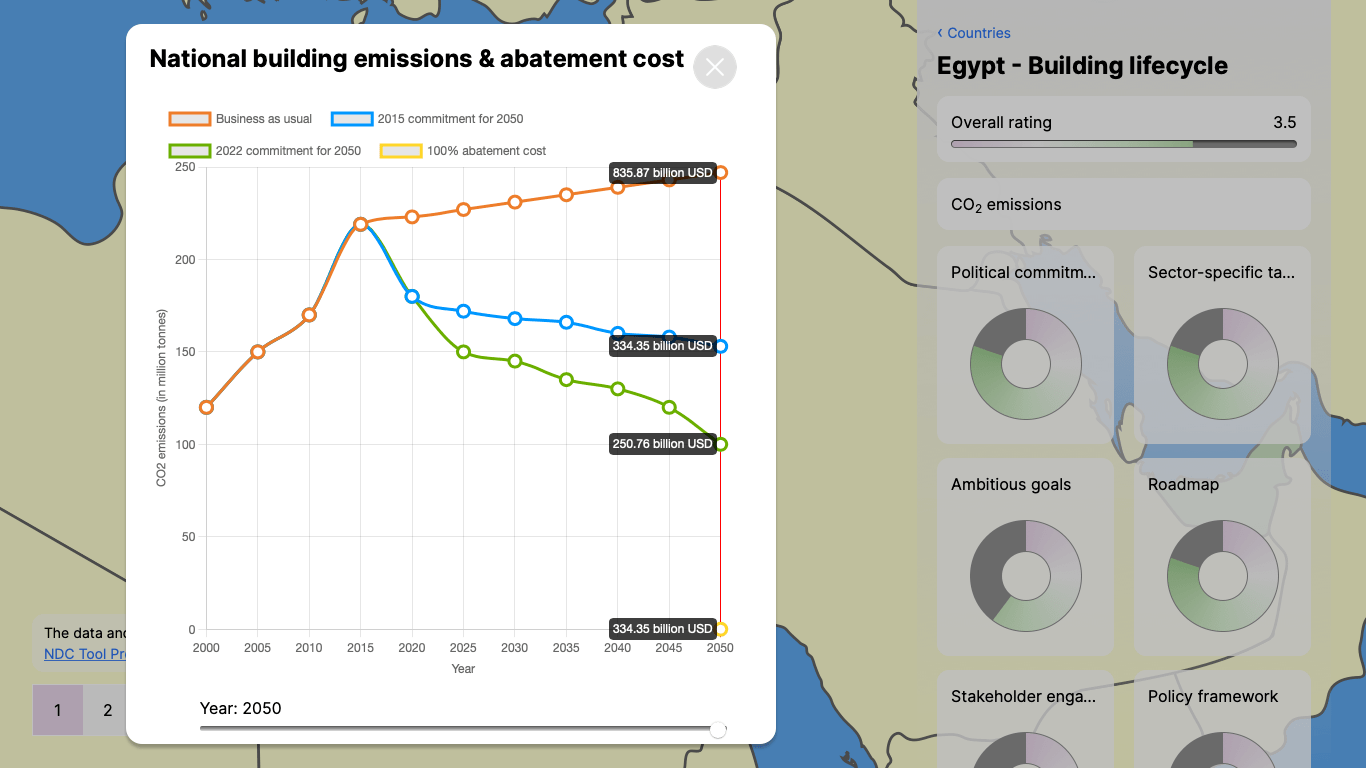
Brief
Design and develop a prototype for a web application to see how countries adhere to their NDCs. Derive user stories from the provided research material.
What should this prototype do?
- Visually represent how the countries fulfil their NDC commitments.
- Rate every country's adherence to their NDCs based on well-established criteria.
- Let the user drill down deeper into multiple NDC criteria and provide insights for each country (when available).
- Visually compare the CO2 emissions and abatement cost based on the country's commitments.
The Design
The prototype had to display a country's annual CO2 emissions, projections based on their commitments, deviation from BAU (business as usual) and 100% abatement cost. We use a line chart to display this information. The end user could use the slider at the bottom to adjust the action year. Doing so recalculates the abatement cost and updates the chart.
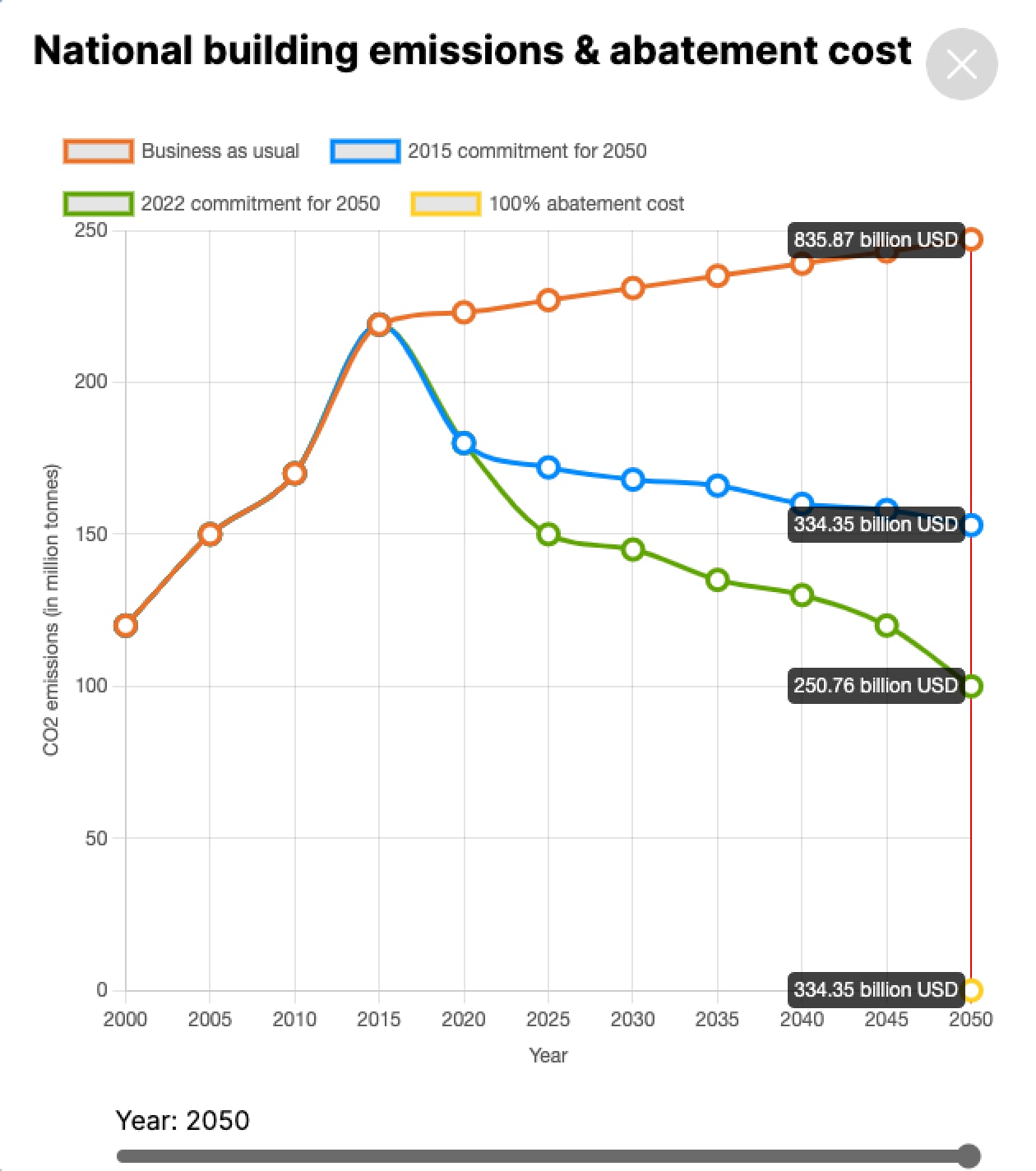
The Development
From the beginning, our focus was getting the design right. We designed four versions earlier that progressively resulted in the one that's presented across the world today. We kept refining details till the last day. Due to the uncertainty around the UI design, we wanted a simple tech stack that's easy to code, maintain, add enhancements or pivot if necessary. We chose HTML, SCSS, jQuery, Handlebars and ChartJS. We implemented a clear separation of presentation and data using JSON files.
Reception
Our client, GBPN, remains delighted with the project handling and delivery. They presented the prototype on 11 Nov 2022 at the UNFCCC COP27 conference in Egypt.
